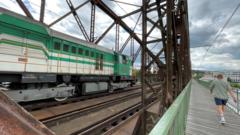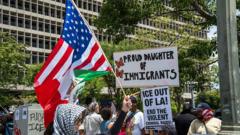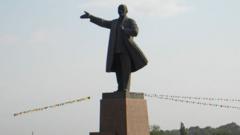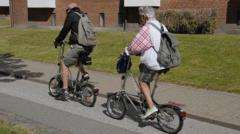A deep dive into how the mixed-race experiences of Nella Larsen in Copenhagen influenced her acclaimed literary works, particularly “Quicksand.”
**Tracing Nella Larsen: The Harlem Renaissance Icon in Copenhagen**

**Tracing Nella Larsen: The Harlem Renaissance Icon in Copenhagen**
Exploring the early life of Nella Larsen and her enduring legacy in the city that shaped her writing.
Retracing the footsteps of Nella Larsen, an esteemed Harlem Renaissance writer, reveals a unique connection to Copenhagen, the city where she spent formative years. This exploration brings to light the experiences that inspired her 1928 novel, “Quicksand,” a narrative centered on a mixed-race woman's quest for belonging.
Larsen’s fictional character, Helga Crane, faced astonishment and scrutiny as she walked the streets of Copenhagen. In contrast to the past, contemporary Copenhagen is a bustling cosmopolitan hub with a diverse population, including many immigrants from Africa and the Middle East. Public perception has also shifted significantly—today, a Black individual may go unnoticed in a city that has evolved from its historically homogenous background.
Despite the changing landscape, many elements of the city have remained unchanged. Here, the bike culture still thrives, and the colorful architecture continues to attract attention. Notably, Copenhagen’s designation as the World Capital of Architecture by UNESCO in 2023 highlights its rich historical backdrop.
Though Larsen seldom penned her own life experiences directly, biographers assert that her work is steeped in autobiographical contexts. Research has illuminated connections through passenger manifests and genealogical records that link her to Copenhagen, echoing Helga's narrative. Born to an immigrant mother from Denmark and a father from the Danish West Indies, Larsen navigated a complex racial identity. This dual heritage shaped her upbringing in a white Danish household in Chicago, before she returned to the U.S. in 1912.
“Quicksand,” published by Alfred A. Knopf in 1928, gained critical acclaim, even drawing praise from intellectuals like W.E.B. DuBois, who recognized its profound social insights. As readers reflect on Larsen’s struggles between identity and belonging, they uncover the timeless relevance of her narrative, a story still resonating within the framework of contemporary discussions on race and culture.
Larsen’s fictional character, Helga Crane, faced astonishment and scrutiny as she walked the streets of Copenhagen. In contrast to the past, contemporary Copenhagen is a bustling cosmopolitan hub with a diverse population, including many immigrants from Africa and the Middle East. Public perception has also shifted significantly—today, a Black individual may go unnoticed in a city that has evolved from its historically homogenous background.
Despite the changing landscape, many elements of the city have remained unchanged. Here, the bike culture still thrives, and the colorful architecture continues to attract attention. Notably, Copenhagen’s designation as the World Capital of Architecture by UNESCO in 2023 highlights its rich historical backdrop.
Though Larsen seldom penned her own life experiences directly, biographers assert that her work is steeped in autobiographical contexts. Research has illuminated connections through passenger manifests and genealogical records that link her to Copenhagen, echoing Helga's narrative. Born to an immigrant mother from Denmark and a father from the Danish West Indies, Larsen navigated a complex racial identity. This dual heritage shaped her upbringing in a white Danish household in Chicago, before she returned to the U.S. in 1912.
“Quicksand,” published by Alfred A. Knopf in 1928, gained critical acclaim, even drawing praise from intellectuals like W.E.B. DuBois, who recognized its profound social insights. As readers reflect on Larsen’s struggles between identity and belonging, they uncover the timeless relevance of her narrative, a story still resonating within the framework of contemporary discussions on race and culture.






















